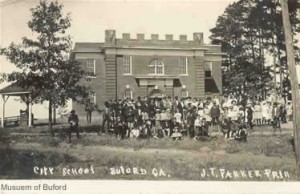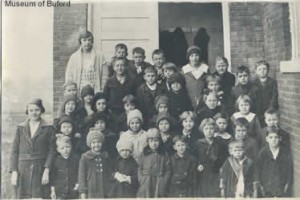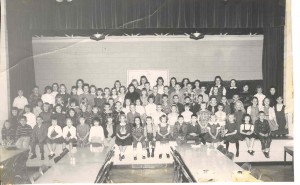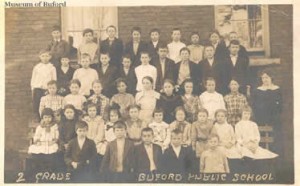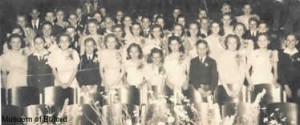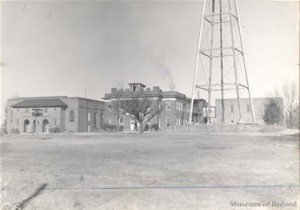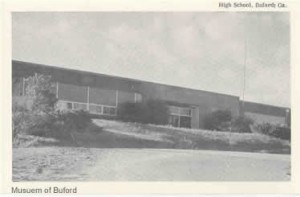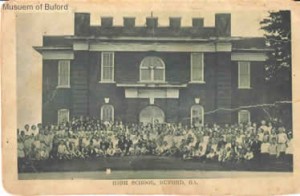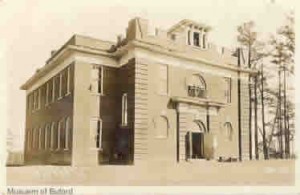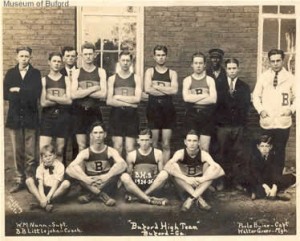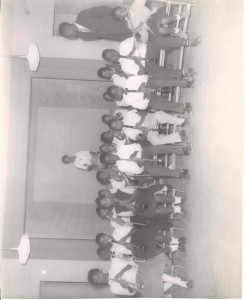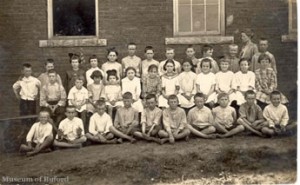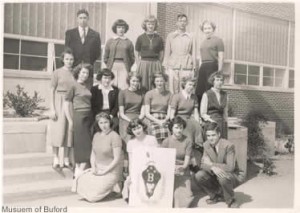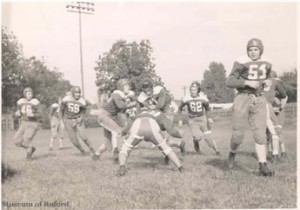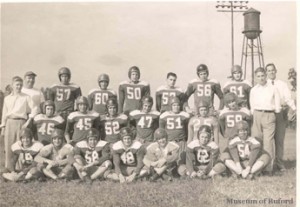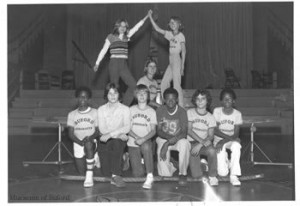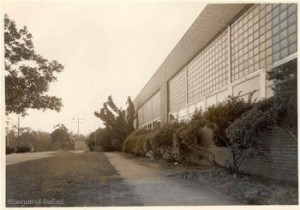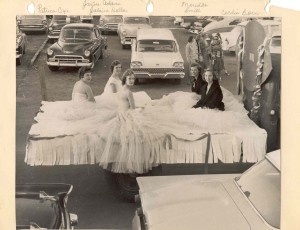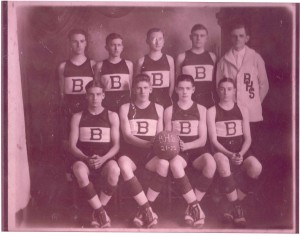Buford’s first school began around 1869. It was held for only three months each summer in a log house on the lot of the N.W. Buice residence and was taught by Mr. J. W. Mitchell. Each of the six families who supplied the twenty-five pupils paid tuition to support the teacher.
Later, another school building was erected on the site of the old Pirkle home. Professor John Espy was superintendent. In 1884 what was known as the “Old Academy” was built. Mr. H.D. Meriweather served as superintendent. Other people who played major roles in the development of Buford’s educational system were Mr. W.R. Pool, Professor Lemont Gordon, Mr. Bondurant, and Mr. Jim Bittman.
In 1890, a new school was built on Shadburn Avenue serving the African American community, with the principal, Mr. E. B. Broughton. The school was moved to Gwinnett Street in 1906. Mr. J. S. Morgan was Morgan was the principal. Emma Lattimore, Oscille Brown, Nellie Roberts Stalk, Allene Roberts, and Hattie Grenard Winston were among the first graduates. Mrs. Winston later devoted many years of loving service to the Buford School System. She enhanced the lives of the students and encouraged them to do their best. This building burned and the school was moved to a white frame building
on Bona Road.
About 1906, another school was built near the center of town. This building housed the grammar school, the high
school, and an auditorium. The auditorium added greatly to the cultural life of the town. Many plays, debates, and oratorical contests were enjoyed by the citizens of Buford in this building.
Mr. W. N. Nunn came to Buford as principal of the schools under Mr. Meriweather. He then served as superintendent from 1909 – 1939. During this time, he implanted high ideals and Christian character into the lives of the students.
In 1940, Mr. Lovic Adams filled the vacancy left at the death of Mr. Nunn. He joined the Navy in 1942. At that time, Mr. A. L. Clark asssumed the superintendency. Under his guidance,
a modern high school was constructed on Hill Street in 1949.
The Bona Allen family donated several acres of land for the construction of new buildings. A modern gymnasium was built with the aid and financial backing of five business men, including Garland Wallace and Milton McLain. Mr. Clark inspired the American Legion and many interested patrons to fence in the land between the gymnasium and high school building to be used for a football field. In 1955, the frame building of the Grenard-Watson School was replaced with a new brick building.
The grammar school moved to the school on Hill Street in 1956. The children gathered their books
and marched to their new school, equipped with modern lighting, venetian blinds, a cafeteria,
and plenty of playground space. The teachers and students were delighted. Mr. Clark served as
superintendent until 1960.
In the fall of 1960, Mr. J. R. Callison became the superintendent of the schools. The student body
had gradually increased and many advancements and improvements had been made. The high school added a new wing which included an air conditioned library with new furniture and fixtures and a counselor’s office.
The Grenard-Watson brick gymnasium was built on Bona Road in 1963 with funds given by the Bona Allen family. In 1966 a committee of 19 African American citizens were appointed to select a
suitable name for their school. The committee wanted to pay homage to two beloved men, Mr. Sidney Grenard and Mr. W. A. Watson, who had spent many years promoting education for African Americans. The decision to the name the school, Grenard-Watson School was a very fitting and appropriate name.
Bona Allen industries were very supportive of the schools. They welcomed students on tours of the Tannery and Harness factory and gave large contributions of land and money for the schools.
The 1969-1970 school year brought many changes. Mr. Joe Avery became the superintendent. At
the beginning of the school year the Grenard-Watson High School was integrated with the Buford
High School. The transition was carried out smoothly and orderly under the direction of Mr. Avery and Mr. Frank Wiley. Four portable trailers were purchased to give needed classroom space for the high school and grammar school.
The 1970-1971 school year brought additional changes. The three schools were completely integrated. Mr. Frank Wiley became the principal of the Buford Grammar School. He held that
position until his death in 1976.


